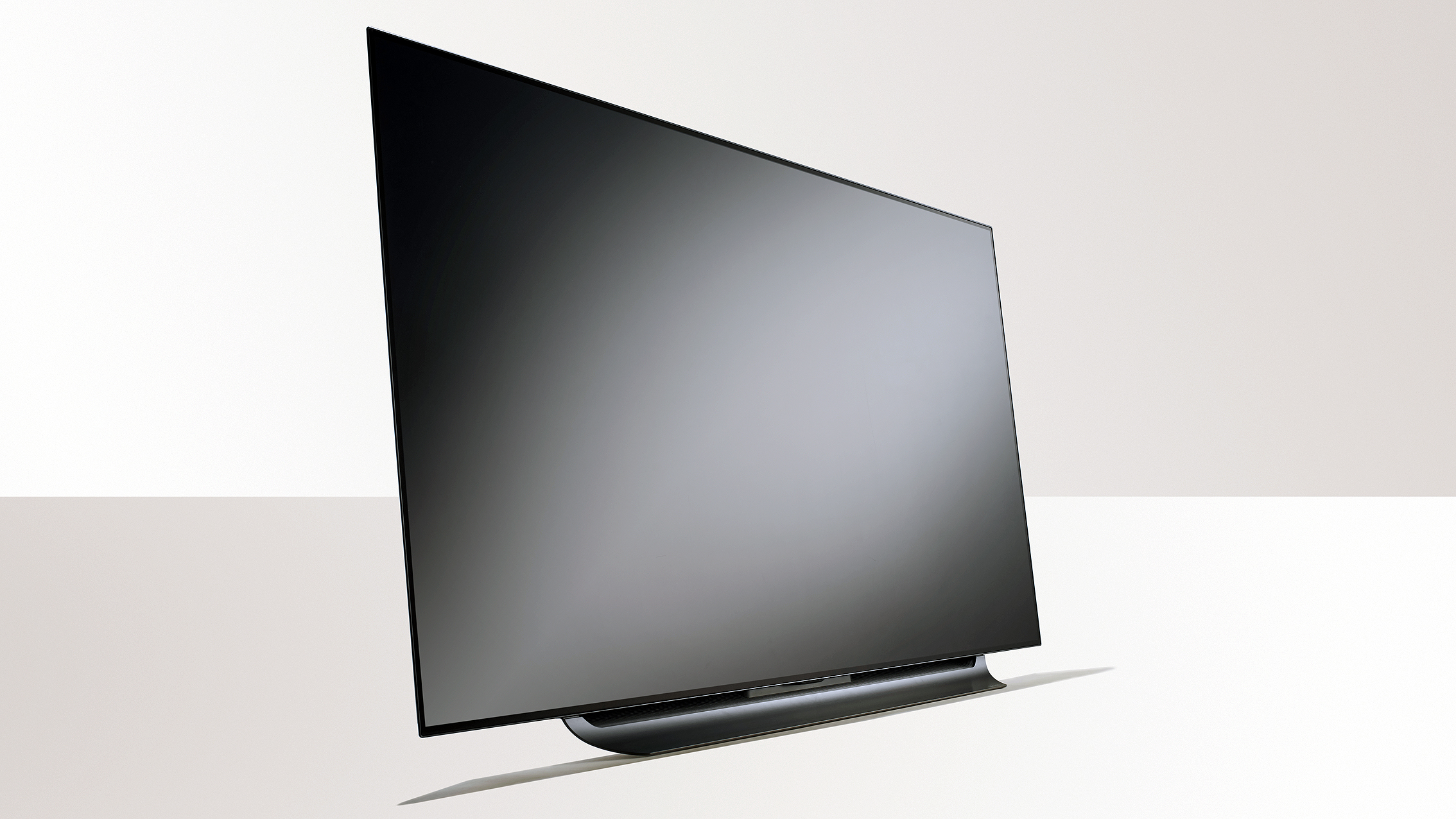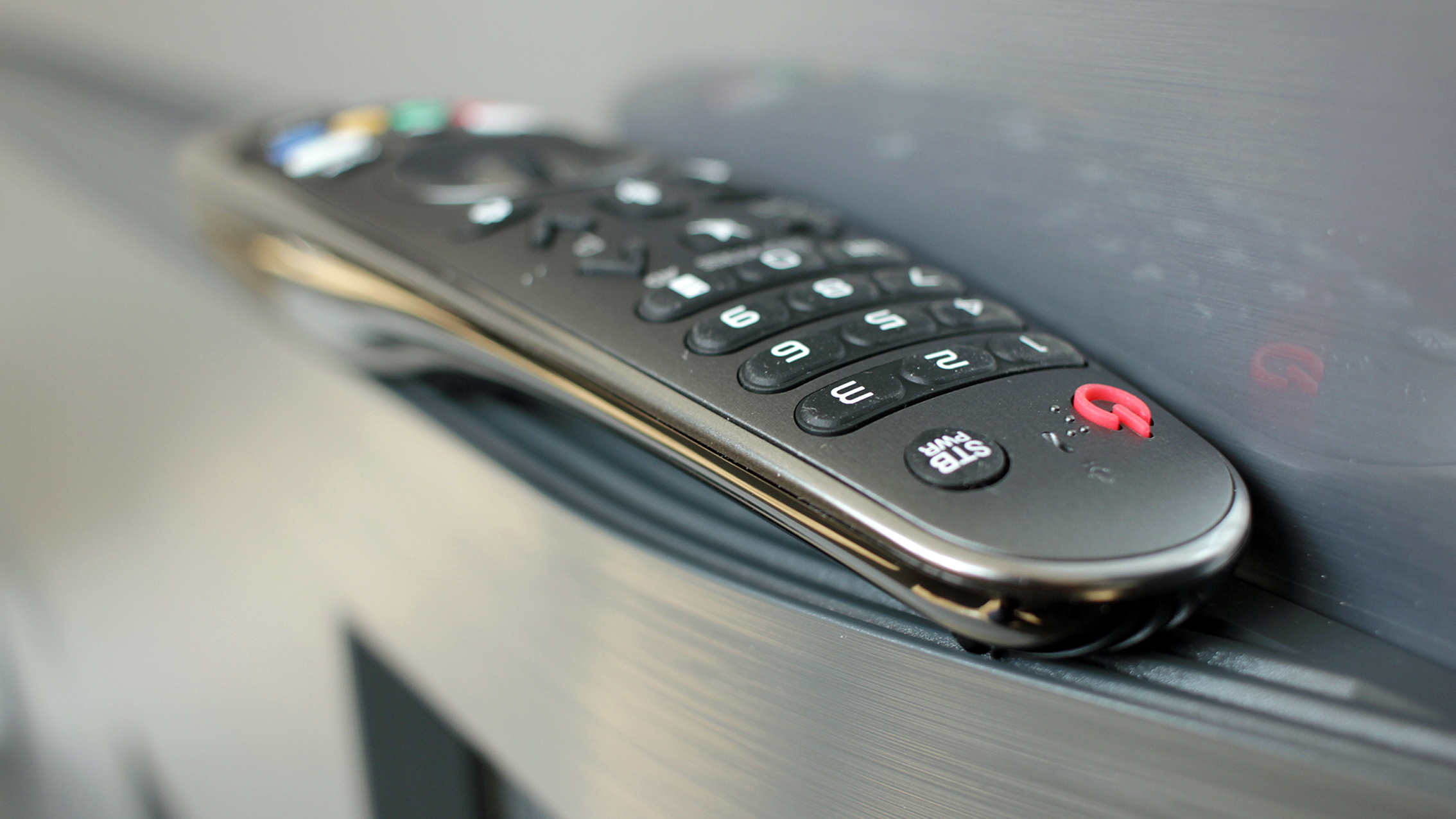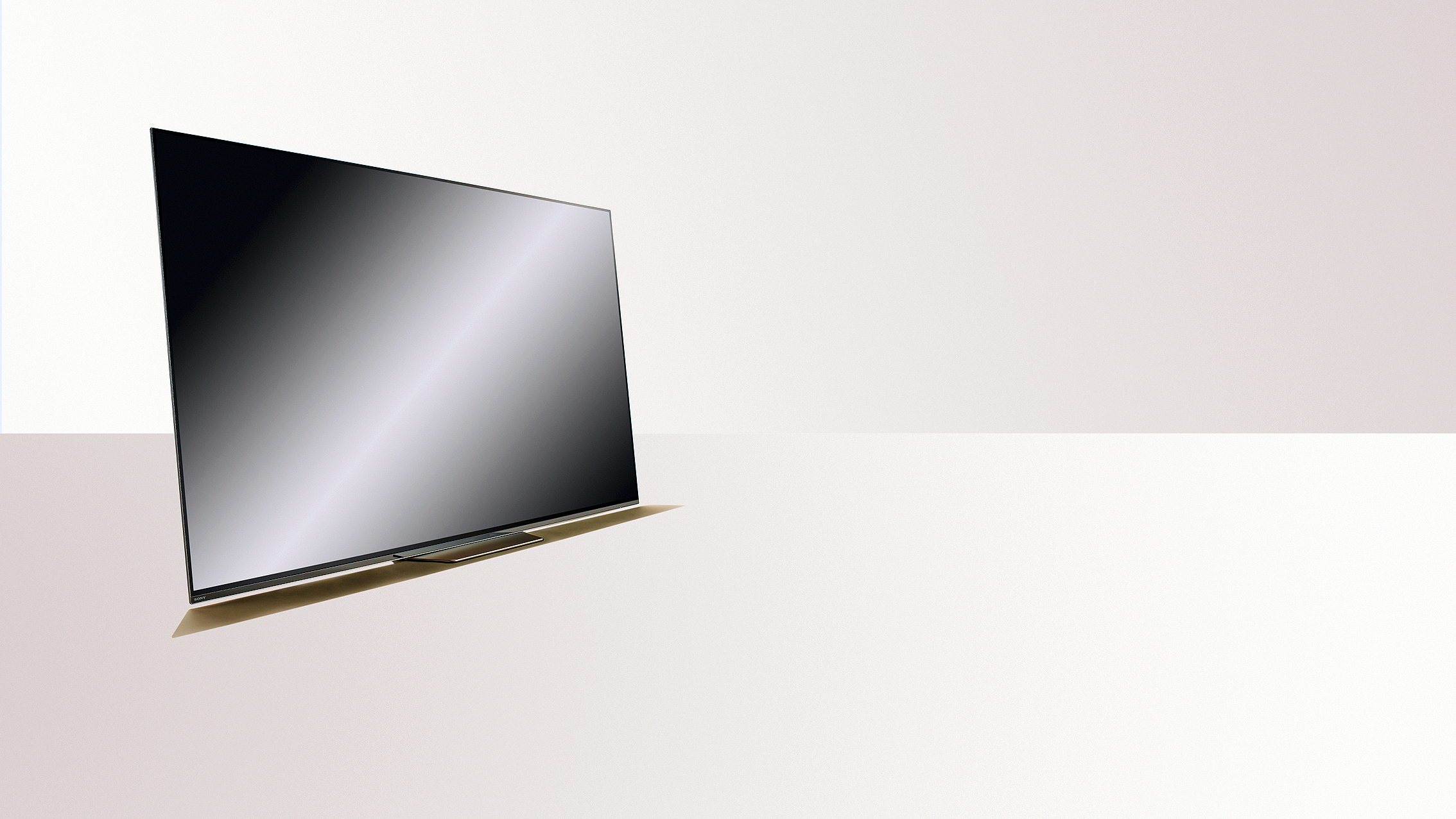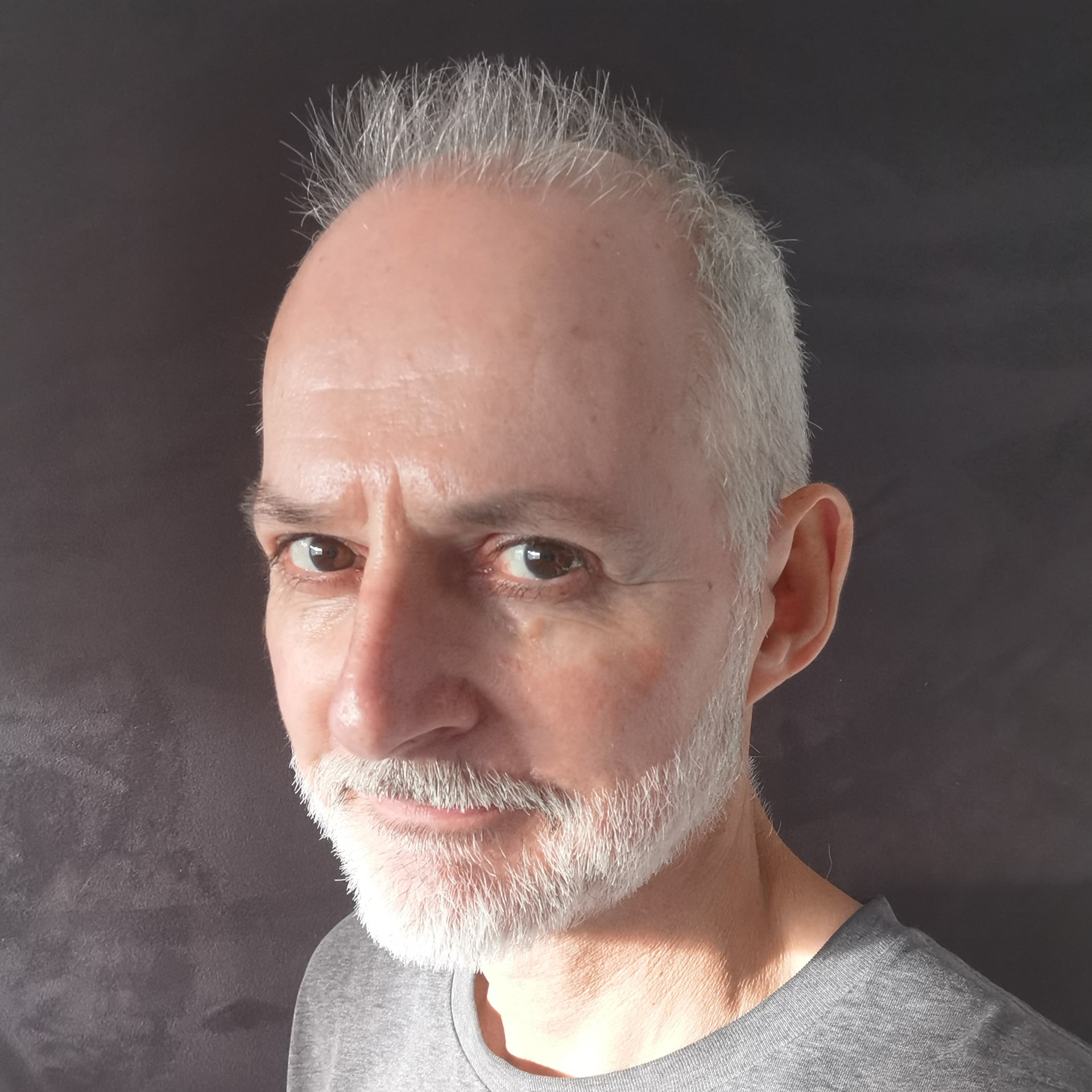LG C8 (OLED65C8) review: a candidate for TV of the Year with UHD, HDR, OLED and… AI
An ultra-bright, beautiful 4K TV with stunningly vivid gaming and movie performance. Oh, and you can talk to it…


LG has produced a stunningly advanced 4K OLED with the C8. This 65-incher (or 55-incher, for the more reserved) offers knockout images, and the set’s fine detail performance (given the right picture mode) is the best you can get (for now). Undoubtedly one of the finest OLEDs we’ve seen.
-
+
Dazzlingly detailed 4K images – the best you can get in many cases
-
+
Incredible screen vibrancy
-
+
Great gaming performance
-
+
Handy AI/voice control stuff
-
-
The webOS smart platform is so packed, it's creaking a bit
-
-
Audio, though not bad, lags behind Sony's
Why you can trust T3
The OLED C8 and its near relative the equally OLED B8 are likely to be two of 2018's biggest TVs. That's in terms of cachet and sales and also, when we're discussing the 65-inch OLED65C8 that's reviewed here or its 77-inch big bro' the OLED77C8, in terms of actual bigness.
That's because, as a mid-range offering, the C8, at least at 55 and 65 inches, is relatively affordable compared to what you'd pay for an OLED of much lesser quality from a few years ago. OLED technology started well, has raced ahead, and now the cost is coming down.
• Read our in-depth OLED comparison: Sony AF8 vs LG C8
At T3, we reckon 2018 will be The Year of OLED, especially if England fans are all currently out buying new screens in anticipation of Wednesday's World Cup semi final. That may also help sales in the rest of the UK, as people kick in their tellies in a rage, then realise they need a new one, in order to watch Take the High Road and S4C. This C8 will be a major winner as people upgrade to OLED, along with Panasonic's FZ952 and Sony's AF8.
Anyway, enough of my yakkin'. On with the review…
- Best TV 2018 – simply the best TVs
- The best TV under £1000 - affordable 4K options
- Best television under £500 - cheaper, not worser
LG OLED65C8: Design

It’s not easy to tell OLED panels apart these days; in a line-up, the chances of sending the wrong screen to the slammer are high. But at least LG attempts to separate its many models, from the 'wafer-thin' W range to the 'bloody cheap for an OLED' B range.
The C8 is a mid-range offering available in 55-, 65- and 77-inch screen sizes, with a distinctive gunmetal grey livery. Glass stretches edge-to-edge, with barely a bezel to keep it in place. The panel sits on LG’s Alpine stand, basically a counterbalanced trim that's a little plasticky but barely noticeable.
Get all the latest news, reviews, deals and buying guides on gorgeous tech, home and active products from the T3 experts
It's a beautiful thing, but since many of you will be wanting a direct comparison with Sony's AF8 and, to a lesser extent, its A1 from 2017. And in terms of looks the LG loses. Not that that is much of an issue once you actually turn on the TV and start viewing what's on the screen, but it is worth noting.
The LG C8 range
This review is specifically about the 65-inch LG OLED65C8. The LG OLED55C8 is the same but smaller, while the LG OLED77C8 is, surprisingly enough, larger.
There was one really good deal on the 55C8 on Amazon Prime. We'd expect to see a few short-term discounts among the best Black Friday deals as well.
LG OLED C8: Performance

Overall picture quality is where the LG really challenges and, in a few ways, surpasses the Sony.
The C8, like the bulk of LG’s 2018 OLEDs, uses the new Alpha 9 intelligent processor. This high performance silicon boasts the most advanced image processing we’ve yet seen on a consumer TV. Consequently, image quality is unequivocally exceptional.
There’s a forest of modes to negotiate, mind. The set defaults to an Eco picture preset, but don’t stick with it. Standard and Vivid are the best options for high contrast, UHD imagery, with the former being the best allrounder for most content.
The Vivid mode for SDR is overwrought but with HDR10 content, it is truly ravishing. The C8's Vivid mode uses maximum module brightness and contrast, and really pings detail, albeit with a more agreeable colour temperature.
A faux HDR Effect is available to improve contrast on SDR sources, by applying Inverse Tone Mapping on a scene by scene basis. To be honest, it didn’t float our boat. It’s certainly not as naturalistic as the object-based remapping that Sony uses to lift SDR material.
Unsurprisingly, the set’s various Cinema settings reduce contrast and subdue luminance. With SDR, the panel is limited to a BT.709 colour space, and has zero sharpness enhancement. With HDR, the colour space expands.
Of Cinema, Cinema Home and Technicolor Expert modes, Cinema Home proves the most watchable, thanks to increased mid-tone luminance.
To maximise 4K fine detail, ensure that Just Scan is set to On rather than Auto. In its default Auto setting, it can create artefacts which obscure fine high frequency texture. With Just Scan On, this clears up and fine detail becomes easier to appreciate.
While, as noted, the C8 is less good than the Sony at pulling out the best rendition of SDR, when it comes to HDR performance, results are truly dramatic.
First, for those who love numbers, here are the hard stats: I measured a peak of 840 cd/m2 (aka nits) with a 5 per cent window, dipping only slightly with a larger window. The C8 has no problem handling spectral highlights, which when coupled with deep rich blacks, translates to deliciously dynamic pictures.
Of course, HDR performance isn’t dictated by maximum luminance, it’s also about the ability of a screen to retain shadow detail in near blacks, an area this OLED excels at.
Putting that more plainly, the vibrancy of colour and sheer tangible detail in 4K content on the C8 can be astonishing. The titular super-pig in Netflix's Okja, with Dolby Vision, is disturbingly authentic; the porker’s eyes seemingly sparkle with life.
Dynamic Tone Mapping is also available, offering an additional processing boost to HDR images. It intelligently analyses the signal peak and histogram information, on a frame by frame basis. This is a very scientific way to, essentially, make the picture a bit brighter.
The C8 also looks superb with HD material. Sky One’s superhero frolic The Flash brims with dynamic lighting VFX effects which positively glow here. The show’s various costumes reveal copious texture. There’s so much to enjoy in its images.
Motion handling on the C8 is good but not exceptional. Both its TruMotion Smooth and Clear modes offer crisp detail in fast-moving sports, but penalise with motion artefacts. Our preferred option is the User setting, with de-judder on or near zero, and de-blur set to 10 or close. Avoid Motion Pro black frame insertion like the plague.
The set looks consistently fabulous with games. In Standard mode image lag is high at 91.7ms, but switch to Game mode and lag gets its game face on, plummeting to just 21.1ms, which is an excellent performance. It’s HDR Game mode is nicely judged; dramatic without being overly dark.
On to the audio and this is another area where the Sony AF8's rather stellar 'in-screen' speaker scores over this, its similarly-priced rival, which can sound rather flat. Well, to be fair, the C8 is itself very flat, and performance from the 40W sound system is better than average for a thin-screen set.
Like the AF8, the C8 has a helpful Dolby Atmos decoder, which works with streamed content from Netflix, as well as external sources, such as Sky Q. This means you can hook your set top box up to the TV and bitstream out Dolby Atmos over HDMI ARC into a compatible sound system. Bosh: audio shortcomings solved.
Oh, and finally, the C8 introduces support for HFR (high frame rate) video, although this has limited use at present. While it can support content up to 100/120fps, the only source for this would be a suitably equipped and powerful PC.
LG C8 65-inch OLED: Features

Connections include four 4K ready HDMIs (one with ARC), three USBs, a digital optical audio output and ethernet, to complement Wi-Fi and Bluetooth. Tuner options cover Freeview Play and satellite.
The set ships with the latest iteration of LG’s Magic Remote pointer. This has dedicated buttons for Netflix and Amazon Prime Video, as well as an integrated microphone, which supports the TV’s new ThinQ AI brain.
The integration of AI into LG’s generally excellent webOS platform boils down to intuitive search and voice control. You can even use the microphone to select picture modes, which saves faffing around menus.
There’s a full provision of mainstream catch-up TV, including a BBC iPlayer ready for this summer’s live 4K World Cup trials, as well as Now TV and Rakuten TV; the latter offers movies in 4K Dolby Vision with Atmos sound, and is only available on LG screens at the moment.
The C8, in short, is what you'd call fully featured. The only issue, and call this quibbling if you will, is that webOS is now so feature-stuffed, with not all of the new additions being totally indispensable, that it's become a little unwieldy.
LG C8 4K HDR OLED TV: Verdict

The LG C8 pushes the envelope when it comes to AV performance. It’s Alpha 9 processor produces dazzlingly detailed, vibrant 4K images, and its gaming performance is top notch.
There's not really much of a debit to the C8 account but onboard audio is just okay, and it lags behind the Sony AF8 when it comes to sound, motion smoothing and overall aesthetics.
LG has produced a stunningly advanced 4K OLED with the C8. This 65-incher offers knockout images, and the set’s fine detail performance (given the right picture mode) is class leading. Whether it's better or worse than the Sony KD65AF8 is a matter for debate and, to an extent, personal preference, but the C8 is undoubtedly one of the 2 or 3 finest OLED TVs created to date.
Epilogue: LG C8 Vs Sony AF8 in the 2018 (so far) OLED showdown

The LG is on the right, the Sony on the left
So, in a fist fight between the LG C8 and Sony AF8, who wins? That’s the question most buyers will want answered.
Unfortunately, it's a points verdict, and a narrow one at that. Both sets have strengths and weaknesses, with neither landing a knockout blow.
• Read our full Sony AF8 review and make your own mind up
When it comes to gaming, the LG steals a lead. It has lower image lag, and its HDR game preset is slightly more dynamic. Although for most of the games I tried, there’s not actually much in it in 'real world' use.
When it comes to HDR handling, both support Dolby Vision, HLG and HDR10. The Sony boasts the best handling of SDR material, offering a more naturalistic HDR-style lift. The Sony also has notably superior motion handling.
However, LG’s HDR Vivid mode is drop dead gorgeous. The LG can also articulate UHD detail (in certain modes) better than the Sony.
LG’s ThinQ AI and webOS platform is clearly better than Android OS, but when it comes to in-set audio and cosmetic design, Sony scores higher.
So in short, there is no binary winner between the two. Forced to make a choice, you might conclude that Sony's TV is narrowly better with the vast majority of video content made to date and available to view – HD, 4K, SDR stuff. The LG, meanwhile, is slightly more awesome with 4K, HDR material
We’ll be debating the pros and cons of these two for months, and we haven’t even got to the Panasonic and Philips OLED options yet. 2018 is looking like a classic year for high-end TV screens so in a way, they're both winners, and as a consumer, so are you.
For over 25 years, Steve has been casting his keen eyes and ears over the best that the world of TV and audio has to offer. He was the creator of Home Cinema Choice magazine, and contributes to huge range of technology, home and music titles along with T3, including TechRadar, Louder, Ideal Home, the i newspaper, and more.

